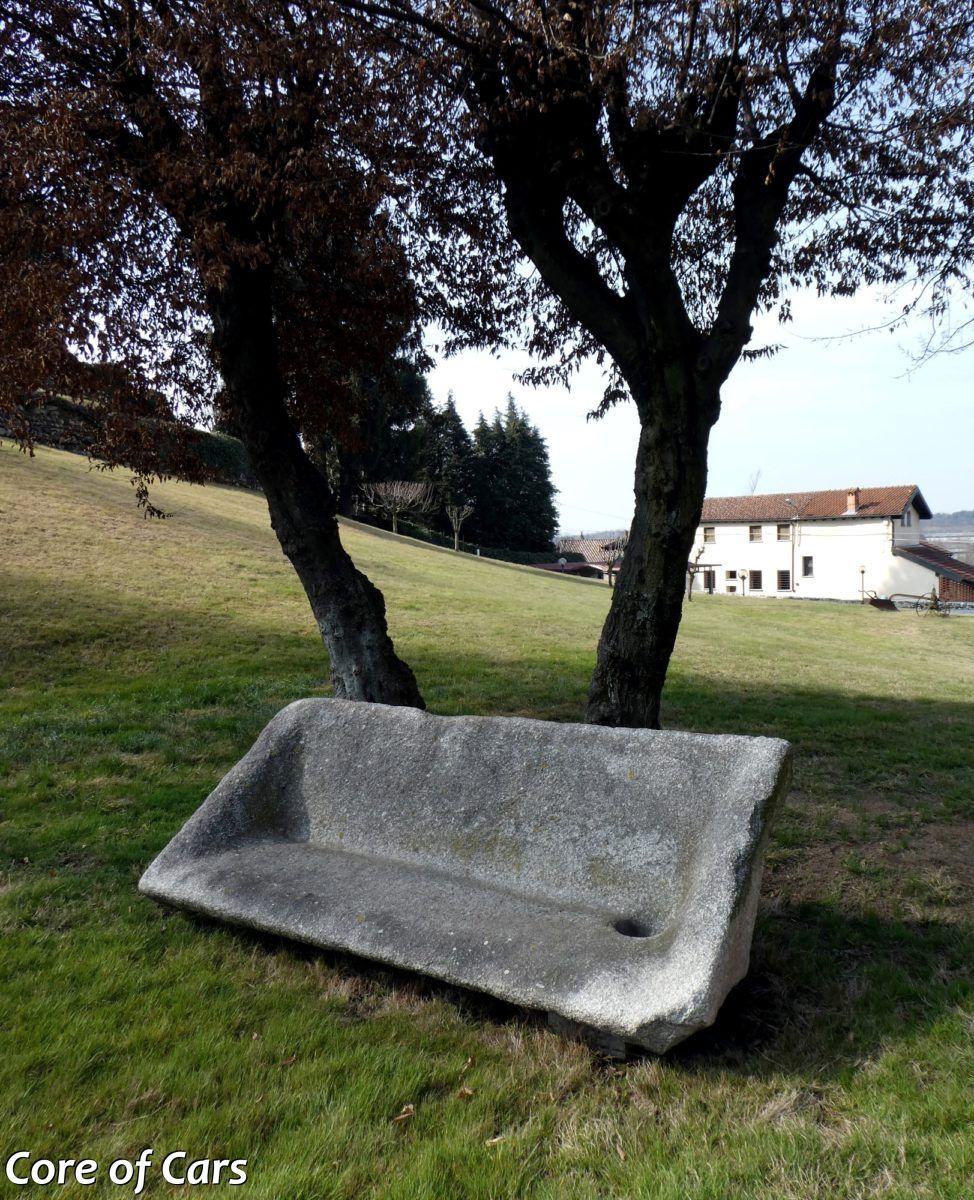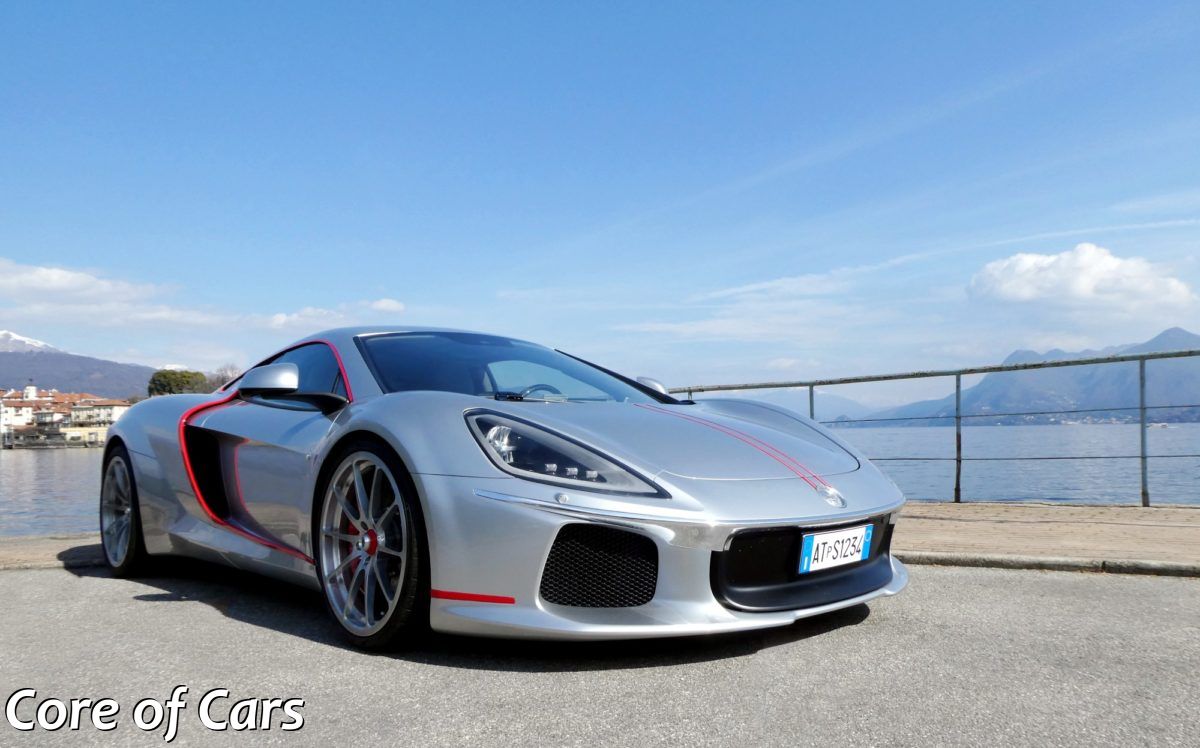Lago Maggiore, sun and a light breeze. The Italian spring offers 17 most welcome degrees. I find myself behind the wheel of the ATS GT – the only one of its kind – being the first motoring writer driving it. Just an hour earlier I was warmly welcomed by Daniele Maritan, the man behind the second act in the history of ATS.
Automobili Turismo e Sport had an exciting but short-lived first act – just listen: After a dramatic foreplay at Ferrari in 1961, later known as the Palace Revolution, a number of key people stood without work, but it didn’t take long before several of them joined forces and formed ATS – with one common goal: To beat Ferrari, both on track and on road. With names like Carlo Chiti and Giotto Bizzarrini on the team, there was no lack of technical design or dedication, and visitors to the 1963 Geneva Motor Show would determine that ATS had created something unique. It was named 2500 GT, with elegant lines from Franco Scaglione’s pencil and a newly developed 2.5-liter V8 that was mid-mounted. It could easily have become a sunshine story, but then there was this beating Ferrari on the track thing. Formula 1 is not considered to be a particularly forgiving sports arena, and ATS did not fare well when the largely untested cars failed, despite Phil Hill having joined the team. The cash flow ebbed quickly, and ATS had to close up shop already in 1964.
As a temporary headquarters, ATS now has a castle, once the house of Italy’s first king. I was shown around the garden, which of course contains ruins from Roman times, a classic well and what I thought was a stone bench, but proved to be part of a sarcophagus – could it get more Italian than that? Daniele Maritan is keen on history and tradition, and wishes to express this through his new GT, where design, interior and material choice should emphasize the classic GT feeling. He points out that the car we are in is constantly developing, and they are continuously testing new solutions to find the best workmanship and giving the car the right expression.
From the passenger seat, on our way to Lake Maggiore, I get a good opportunity to study things closer. Most of the interior is clothed with nubuck leather, reminiscent of suede leather or Alcantara, but rates higher than these in the pecking order. It feels correct and gives an aura of confidence and comfort, although I would personally choose something that does not have that familiar shadow play depending on the way you stroke the surface. Just below the windows, on the doors and dashboard, is a red strip of eel leather, and the seat I’m sat in has inserts of soft carbon fiber, and this combination of exclusive and sporty is underlined by switchgear and instruments in aluminium. The center console forms an elegant arch and is fitted with gear lever, start button, mode selector and lock button. The gear lever, in itself a study in aluminium shaping, has on its thumbside built-in buttons to select drive, neutral and reverse, and beneath the center console, the gear transfer linkage is visible. Thus, in manual mode, you can choose whether to use the lever or the paddles on the steering wheel. A handy detail with the paddles is that each can be used in two directions, both with the thumb and with the fingers behind the wheel, so that you can change gears singlehandedly.
We park a few meters from the water’s edge and open the doors upwards after Daniele instructs me that two quick pushes on the door button are needed for the car to deem it safe to open the door. Butterfly doors, they are called, and the passage to the outside world is easy to traverse, but I can’t seem to agree with myself whether the visual expression of such doors fits a GT car. It certainly looks great and there is something Italian about doors that open upwards, so maybe it was the right choice. With the doors open, you see some of the carbon fiber tub of the ATS GT. There is no lack of modern technology, both inside and underneath the bodywork. I know that ATS builds the car on an already existing base that includes chassis, engine and drivetrain. Shapes, engine and door mechanism makes me think of a well-known English brand, but Daniele says he can neither confirm nor deny anything about the origins. Frankly, I do not see the need to dig more into this, since the Italian coachbuilding tradition largely consisted of giving an existing product a new body and interior.
I’m stepping outside to watch the car from the outside, something I’ve already done on another occasion when I was invited by Daniele to attend the launch of the ATS GT at Salon Privé in England last fall. The man who has penned the shape is Emanuele Bomboi, who has spent time at Bertone and already has some designs under his belt, including the Willys AW380 Berlineta Viotti and the Giannini 350GP, the latter surely being the wildest take we’ve seen on the Fiat 500. I would say that the ATS GT is a successful design, where the overall shape of the bodywork and the details correspond well and give the car classic proportions in a modern design. Exciting features include the contrast line that makes the car easily recognizable from the side, specially designed headlights and a defined rear that houses the functional rear lights. Not only do the rear lights look cool with their ring shape and with how they seemingly hover in thin air when you see the car from the side in the dark, they also act as outlets for hot air from the engine compartment.
After a maritime photo shoot, it’s my turn to take the wheel. To open the door, I put my hand behind the winglet next to the door and activate the touchless sensor – how cool is that?! I feel immediately comfortable behind the wheel, and it’s surprising that I have so much space in such a low car despite the feeling that I’m sitting relatively high. Unfortunately, the wheel can not be adjusted as high as I want it, but I roll off without drama. The engine is a 3.8-liter biturbo, and rumbles happily from its dwelling right behind us. Daniele says that they want to further develop the engine and exhaust system to get a different sound, but I can’t say that the music I heard from behind me was exceedingly inadequate.
The road winds as it follows the water’s edge, and I find that the car is thriving, even at low speed. The steering is concise and responsive, the outwards view is impeccable and the comfort is good. I immediately compare the experience with the one I’ve had in the car I have been driving the previous days – a shapely Lamborghini Aventador S – and quickly find out that the two cars answer quite different questions. The ATS GT is, as the name suggests, a GT car designed for long, eventful and exciting drives, while the car with the bull in the logo is certainly an entertaining thing, but also demanding. With unstrained arms I guide the car across the Italian asphalt, where I also note that the suspension and tires sweep away small holes and other unevennesses in the road. This car is a pleasure to drive, I think to myself, as village goes over to open fields where speed limits and road conditions allow for more speed. A solid push with the right foot and I smile like a boy. 650 horses push me back in the seat while the car is shooting ahead, and I hear the turbos joining the choir. There is something magical about vigorous engine noise and corresponding acceleration, isn’t there? Daniele conceals quite well the fear of writing off the only ATS GT, and smiles widely in response.
Safely back on the last few, narrow roads up to the castle, I’m a happy man. Both because I was fortunate to be the first motoring writer to try this creation, but also because said creation provided a very convincing performance. Seen together with Daniele’s mentions of customers and plans, the ATS GT has made me believe that the second act of the ATS history can turn out to be a nice story with many happy actors. Now, if I just could wrap my mind around that sarcophagus in the garden!


